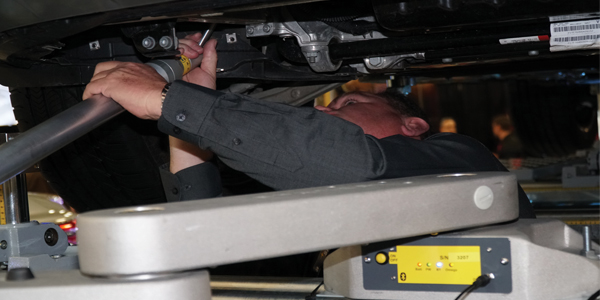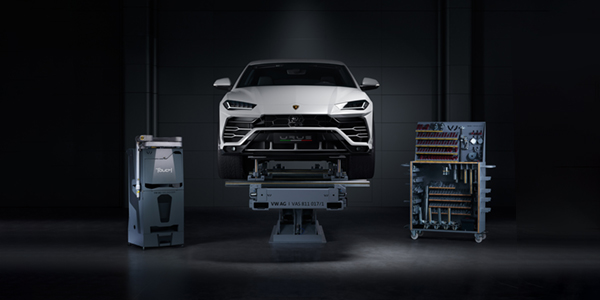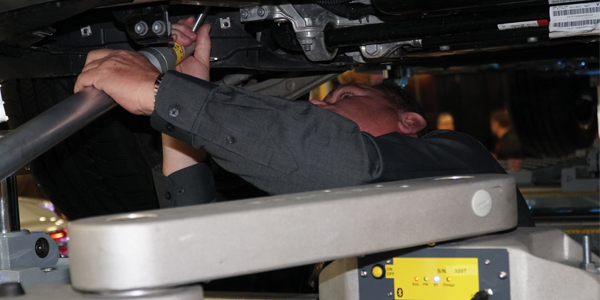
In today’s world of new metals, plastics and electronics being used in vehicle construction, we see the world of collision repair changing not just dramatically but drastically.
We’ve all known for years that change was coming, but most of us had no idea it would be at this level. Some shops, however, were preparing and positioning themselves for change and going with the flow. These shops prepared for the inevitable and embraced it. Many shops found change hard to accept or the new costs more than they could bear and procrastinated. No matter which category you fall into, the reality is that the requirements today to repair a vehicle go well-beyond repairing dents and replacing fenders. Even these procedures have changed and are no longer a basic operation.
A Bigger Picture
Body shops today need to look at a much bigger picture than just replacing a part. Not only does that part need to look good, but it must fit correctly and be aimed in some cases. A simple bracket on the front of the vehicle can have a serious impact if it isn’t aimed right.

Let’s be blunt: If the vehicle is not dimensionally correct, many parts will be affected. For example, a technician is complaining about a part not fitting on a repair that involved a good deal of damage to the front end. The first question I would ask is, “Is the front straight? What were the measurements?” The attitude and comments following these types of questions are often colorful and sometimes not very pleasant. The point is, how do you know a part doesn’t fit if you don’t know if the vehicle is straight? You can argue all you want about how experience can tell you, but without documentation or proof, my point is valid. In today’s vehicles with tighter tolerances in manufacturing, we need to measure to be accurate.
A Whole New Ballgame
Electronics with Advanced Driver-Assistance Systems (ADAS) has added a whole new dimension of importance to measuring for damage and measuring during even minor repairs. Brackets and mounting locations are absolute in being repaired and replaced to specifications. Sensors, radars and other components must be aimed or recalibrated after repairs. If dimensions or mounting locations are still damaged, recalibration may not be possible. Small degrees of difference can have a huge impact as it projects further from the vehicle.
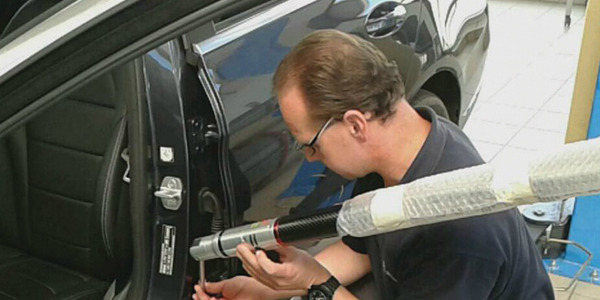
The ADAS requires correct input from these sensors. The repairs must be complete and documented to provide proper operation and reduce a shop’s liability. Imagine a blind-spot detection system failing and it is found that the quarter panel mounting is incorrect. Failing to recognize the importance of adaptive cruise control sensors and mounting dynamics could also be a dangerous mistake.
Measuring: A Pain
Let’s be honest, measuring is a pain to most technicians. It’s a time-consuming process that requires skill and training.
We have new measuring systems being developed and introduced every day, and they’re not cheap. Add in the time to train a technician and it becomes even more costly. We start to see where it becomes difficult for many shops to either update their equipment or even train their technicians. The cost of training and time by itself brings resistance from shop managers and owners. It’s hard to envision a payoff in the future or benefit when you have cars to deliver today. This is where measuring documentation is important to all. Being able to offer printouts of before and after verifies the vehicle damage and labor to repair that damage. This documentation also verifies that all ADAS sensors are properly mounted for recalibration.
Get It Straight
Now let’s face the basic fact: The vehicle must be straight. This is not optional. It is the basic and most fundamental part of auto body repair. Second, what is damaged beyond repair must be replaced. I am not here to debate what determines replace vs. repair. I tend to follow the vehicle manufacturer recommendations.
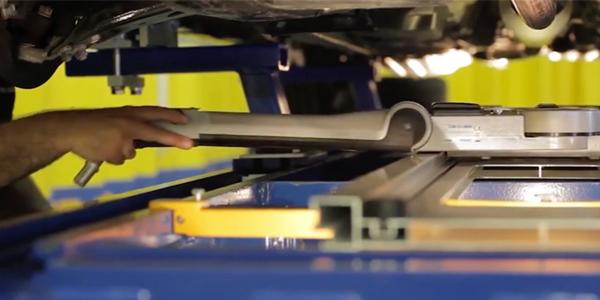
Knowing what is damaged in a vehicle is a lot harder today than it was in the past. There are many more parts and hidden areas or low-access areas where damage may occur. This is one of the advantages to measuring during pre-op or disassembly – you can find damage that is not visible. This helps prevent the surprise of finding more damage during repairs and slowing down the process. We’ve all learned the joys of supplements.
For many vehicles that come into shops, it’s obvious that they’re going to be put up on a frame rack and repaired. Measuring is a given for that repair. With new steels and the strengths of other materials being used, the damage is more extensive than originally thought. A good example is energy transfer damage much further back than the point of impact on newer vehicles. Preliminary measuring can help to find that damage before repairs begin.
The question I have for shops is on the not-so-obvious repairs, for example where we’re replacing a radiator support, bumper reinforcement with mounting bracket damage, upper rail, etc. How many shops measure before welding in these parts? An assumption is that if we replace all damaged components, it should be right. I do not want to bring up the old adage about “assuming,” but you get the idea. Just replacing the visually damaged parts may not complete the repair. The ADAS sensors now add an undeniable importance to measuring to verify the accuracy of replacement parts.
Setting Up
In your next shop meeting, ask your techs, “Who feels comfortable using our measuring system on the frame rack? Who does not?” If any technician has reservations on how to use any equipment, seek out training from the vendor or even internally if you have someone who is proficient with that piece of equipment. The more practice and proficiency that’s gained, the faster setup becomes and the more confidence is built.
I’m surprised at how many technicians are unsure of their skills using measuring equipment – which leads to not using this equipment at all in the repair process. I-CAR offers classes on the basics. The best training might be getting ahold of your vendor and asking for it. Knowing how to set up and attach targets is a critical part of the knowledge needed to use this equipment correctly. Knowing which adapters to use and why is also critical.
The fact is you need to find out whether you have the right equipment and if you have at least one person who knows how to use it correctly. You do need both the equipment and someone who can properly use it to make it work. This is not something you can fumble through or make do with.
Frustration
One point of frustration I see is the update side. Many companies are having a tough time providing updates or information for newer cars to shops. Sometimes it’s available, sometimes it’s not. The time spent to find these updates or even corrections can be frustrating. I’ve found that ALLDATA or I-CAR RTS are good resources for information. Also, always keep the contact information of your equipment supplier. Note where you found the information to use it next time to speed up the process. Sometimes, using another undamaged vehicle for comparative measurements is the easiest and fastest way to go.
New Technology
Whether you want to add to your existing equipment or buy something new, there is some easy-to-use great stuff out here that can provide documentation. For example, there are new measuring systems that can be used on the ground versus having to put the vehicle on a frame rack that offer a good estimate of damage during pre-op.
Be sure to evaluate what equipment is best for the vehicles common to your shop. Look at the space needed, or if you want to use with a lift. There are many options, and the ease of operation compared to past years has improved greatly.
Questions to Ask About Your Measuring System
- When was the last update?
- Does everyone know how to navigate the software?
- Can you do printouts before and after?
- Does everyone know how to add a measuring point?
- Are all measuring trams or targets there?
- Are all adapters and clamps for targets there?
- Is the measuring system easy to use with your current pulling system?
- Do you have a tram gauge for point-to-point measurements?
- Is the equipment correct for the cars you’re working on?

